With the landscape of fashion imagery diversifying at a faster pace than we’ve ever known, there’s nowhere better to look for an idea of what’s to come than the kids on the cusp of entering the industry. Accordingly, we introduce you to five of them, fresh from graduating from Central Saint Martins’ prestigious MA Fashion Communication: Fashion Image Class of 2021. Spanning photography, styling, video, VR and more, their work is a testament to the ever-expanding horizons and potential of fashion image-making.
Each of their projects – exploring themes as diverse as Chinese internet subcultural aesthetics, London streetwear culture and AI – is a keen-eyed reflection of the shifting times we live in, and an exciting lens into the plural possibilities for the visual culture of tomorrow. Here, they share the inspirations behind their images and their thoughts on what fashion imagery could look like down the line.
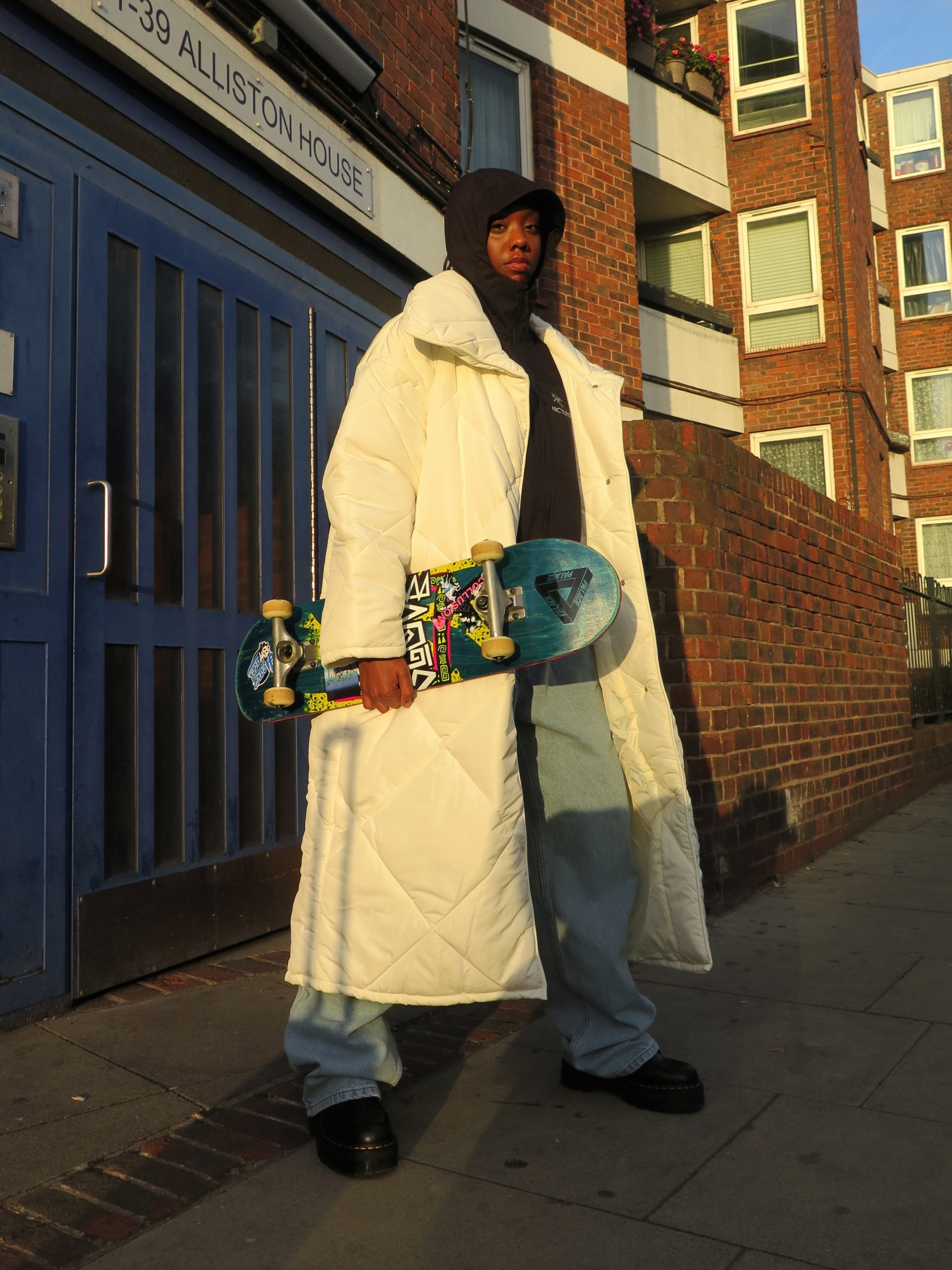

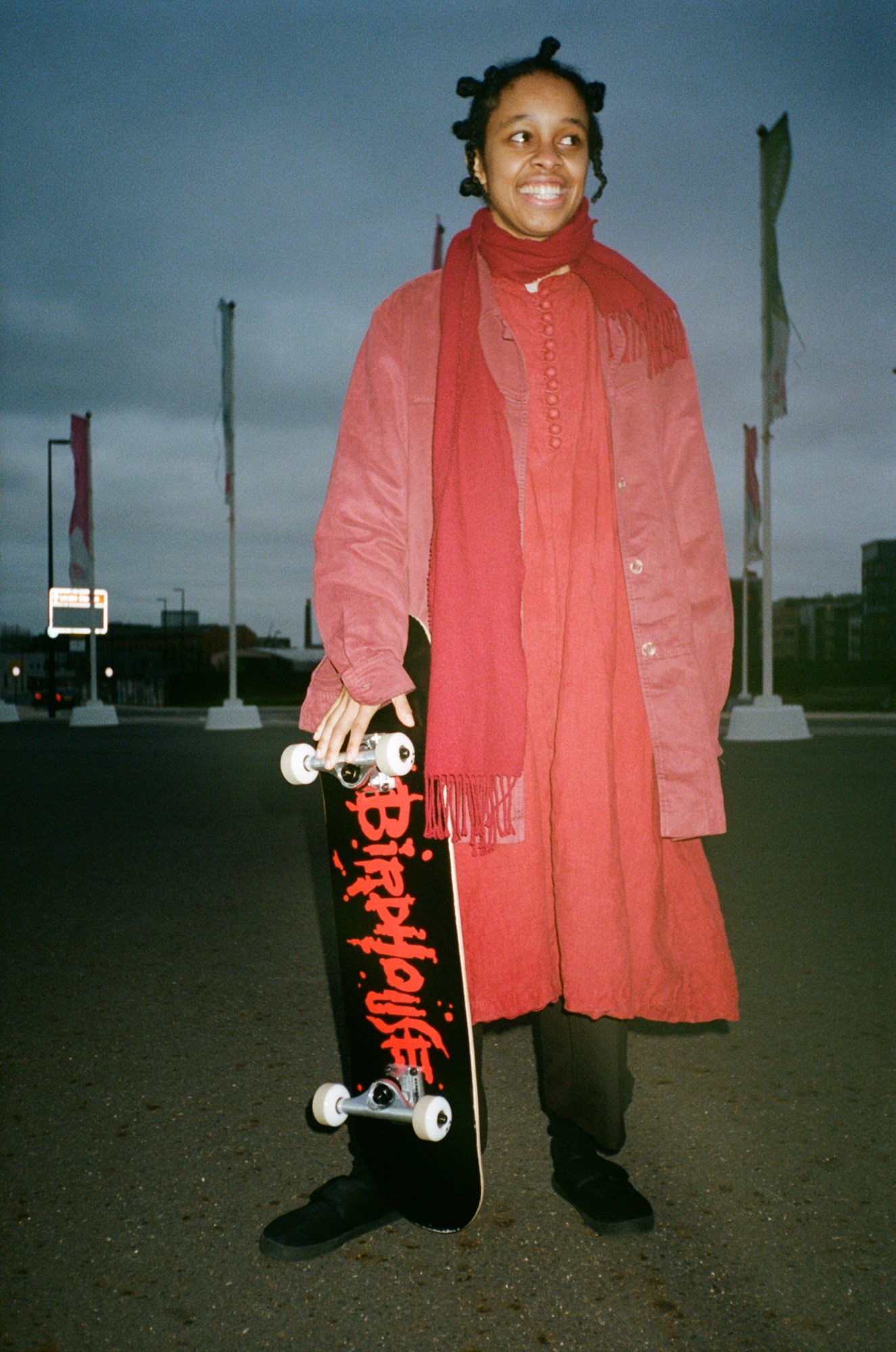
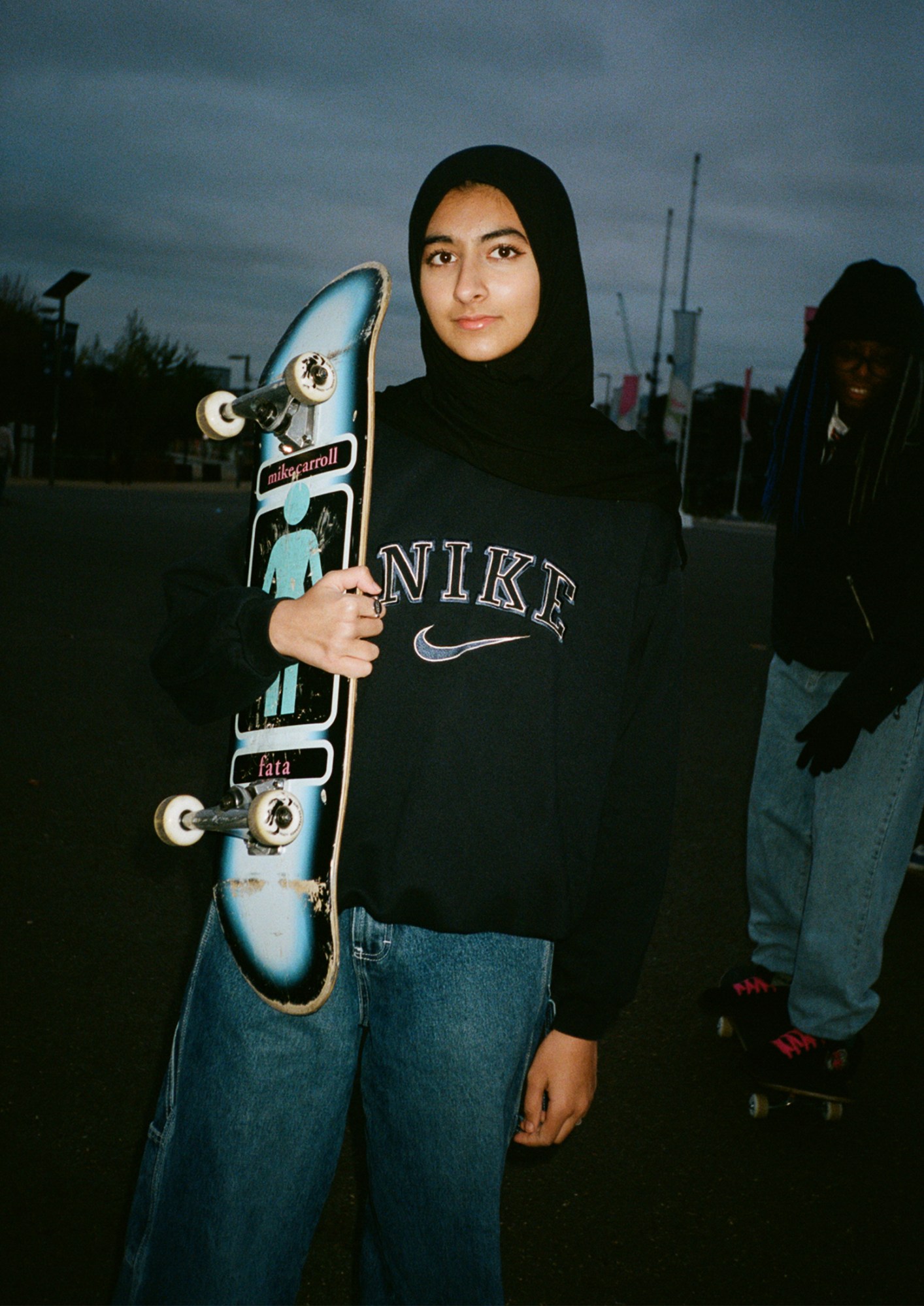
Martus Chai
How would you introduce your final project?
My final project is a publication about the London streetwear scene and youth culture. I tried to cover different groups and communities, incorporating “the drop and merch community”, the archive fashion group, ravers and club-goers’ fashion as well as skate culture.
For you, what makes for a powerful fashion image?
For me, a powerful fashion image should be able to tell a story, I always find that spontaneous moments captured in photos are more powerful and captivating than a carefully designed and curated shoot.
What is fashion photography’s purpose today?
I think a lot of people think that it is to serve social media, and to circulate online, which is partly true. That said, as print becomes more niche and fewer people talk about it, I think printed fashion images are more precious and important than ever. As we spend so much time seeing everything through a screen, tangible physical imagery is even more powerful.
Which fashion image-makers do you particularly admire?
Elaine Constantine, Steven Meisel, Alasdair McLellan, as well as newer photographers like Stef Mitchell and Hugo Comte. I am particularly drawn to people who capture youth culture well, and create shots that are dramatic and dynamic — that almost have a film still-like quality to them.
You’re graduating at a time when conversations around the politics of race, gender, sexuality and wider identity have never been more prominent in fashion discourse. How do you position your work with respect to these conversations?
Focusing on a topic like skate culture, I wanted to look for the underrepresented and marginalised within the community — all you see in the mainstream media are mainly white straight cis men. I discovered this skate group called Melanin Skate Gals and Pals, which creates a safe space for POC and queer skaters. As a POC myself, I was really touched by what they were doing and it made me feel like this project went beyond fashion — fashion became a way to embrace a marginalised group within our community.
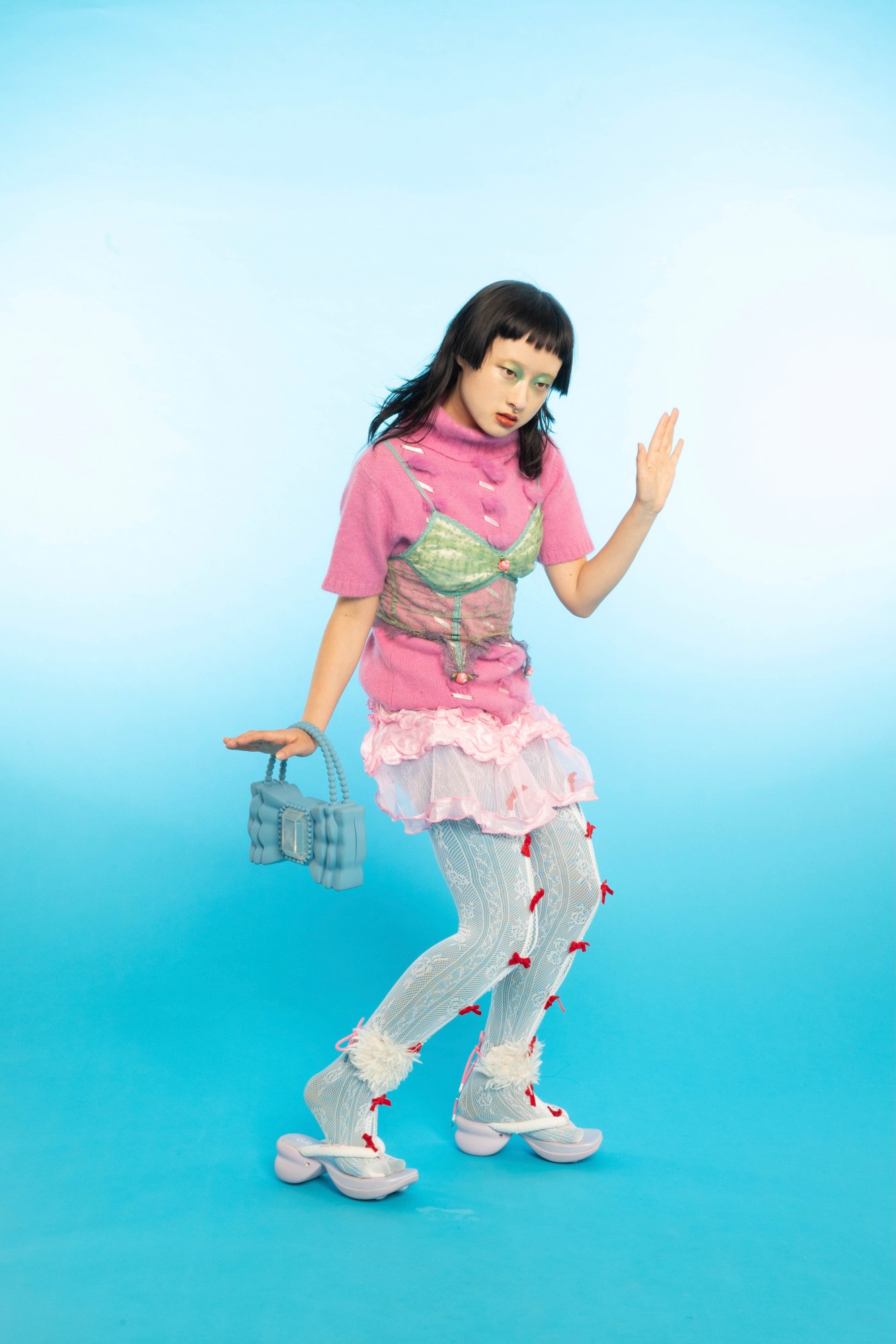
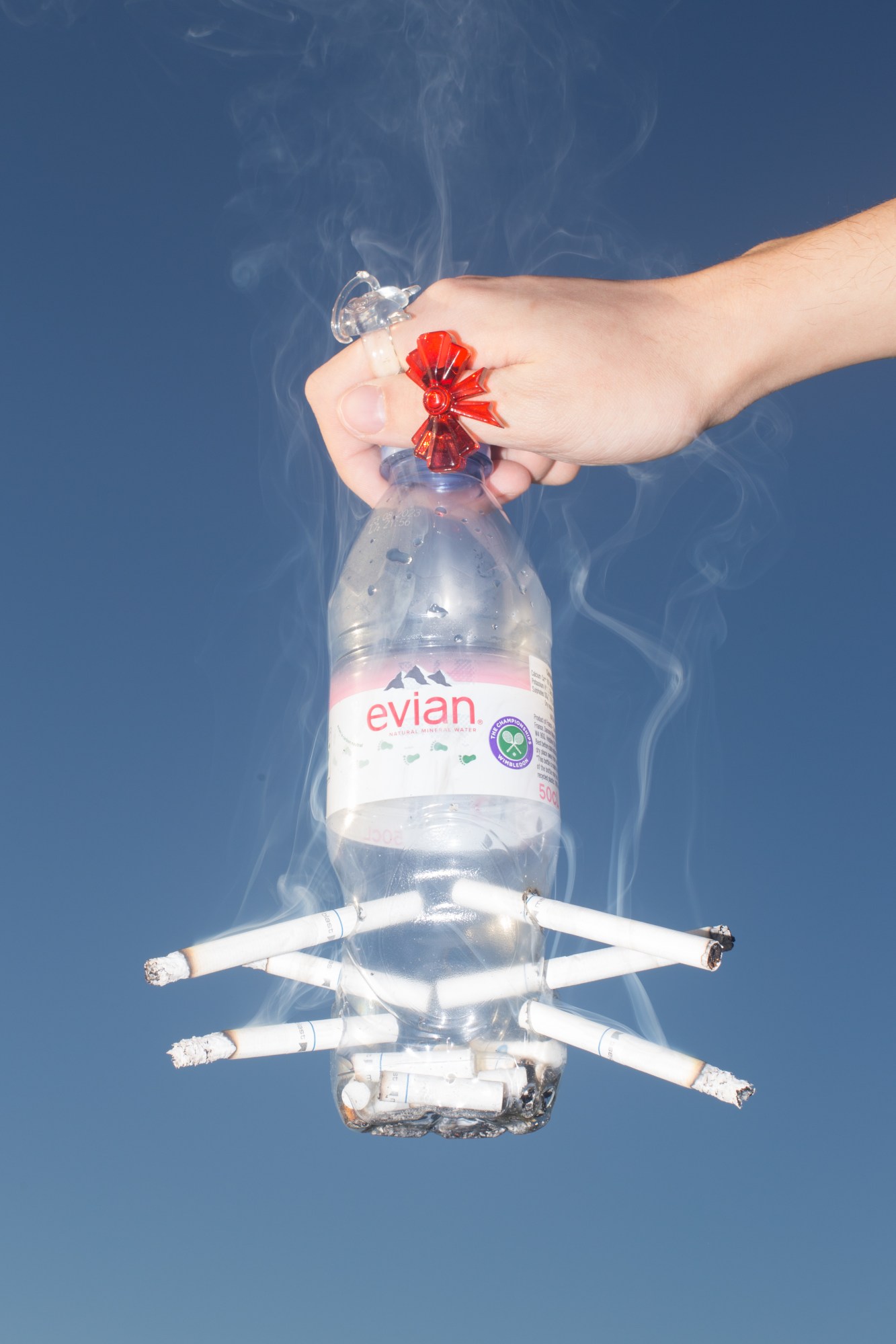
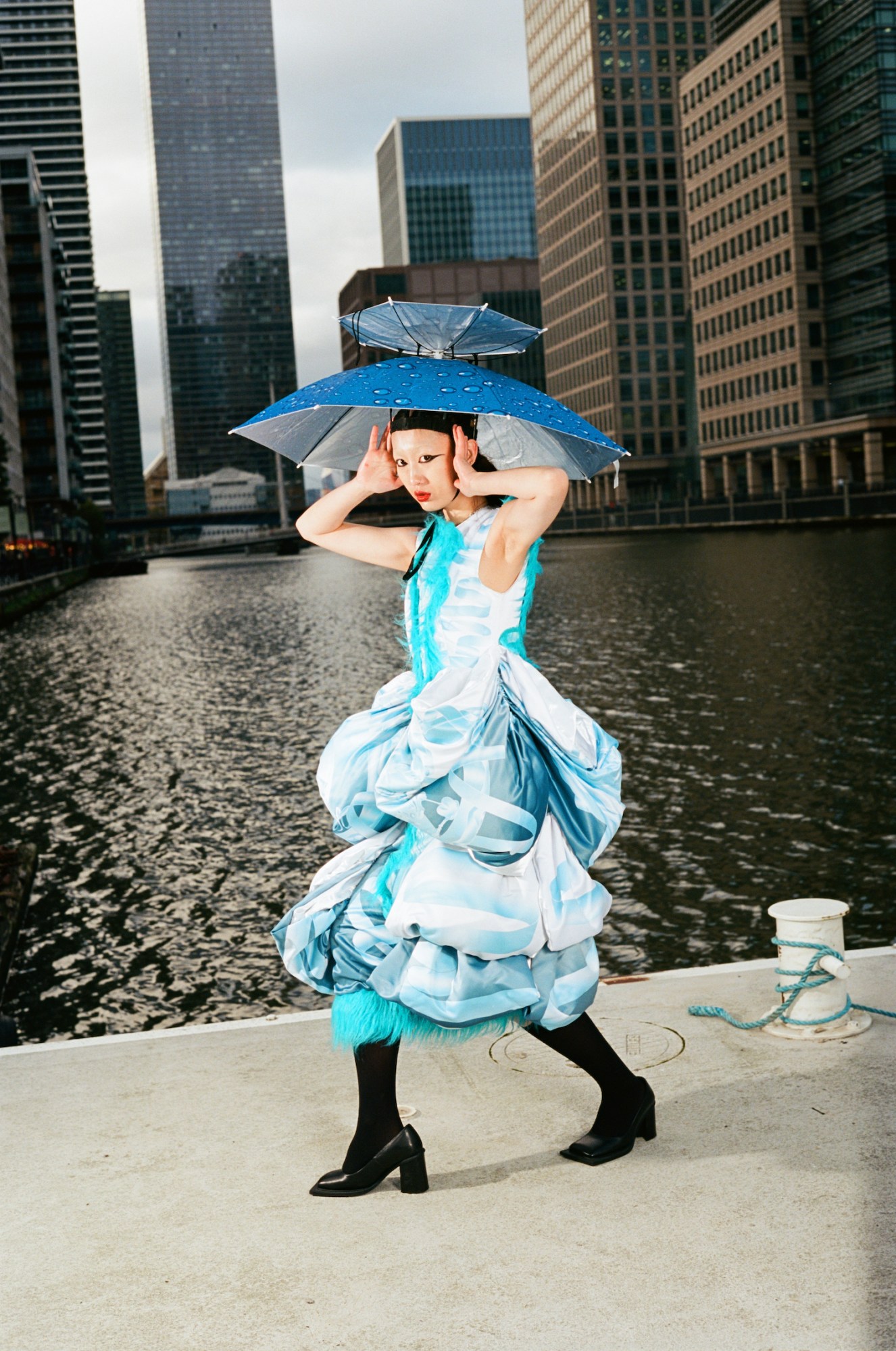

Yao Peng
How would you introduce your final project?
My final project is inspired by the Tuwei cultural phenomenon, a genre of short videos found on the Chinese internet. Based on my previous exploration of socialist magical aesthetics, I styled my work with the quirky decorations influenced by the pragmatic aesthetics that are currently found all over the internet in China. For example, the motorcycle windbreaker cotton jacket, home sauna machine, cell phone umbrella, and so on.
What were the central themes you wanted to explore?
The word “Tuwei” has been in the Chinese public eye since around 2017, translating directly into English as “the taste of soil”. It initially meant tacky and unfashionable, but after two years of evolution it has become a popular symbol and its meaning has changed. Tuwei videos and their derivatives usually present a simple, outdated, and even cheap sensory experience, they have swept the internet with symbols that are out of step with modern pop culture.
I started to capture this cultural phenomenon through photography during my BA, as I felt that, rather than vulgar, it was in fact very creative. I think of Tuwei as a kind of subcultural aesthetic, and that gen Z’s contribution to subcultures — and the pursuit of non-mainstream culture around the world in recent years — could point us towards the aesthetics of the mainstream fashion in the future.
Which fashion image-makers do you particularly admire?
The first one is Ren Hang, who used the human body to create unique photos through different poses. I don’t like to shoot naked to attract people’s attention, but through Ren Hang’s work, I gradually became aware of the inherent mystery of body. Because of his influence, I often ask my models to pose in odd ways, too.
The other is my friend Princess Butterfly, who is studying fine art at CSM. She provided me with a lot of garments that fit the theme of my shoot. She is also a pioneer in the study of the Tuwei aesthetic in China, and her clothes – such as the vase dress and the hot pot beef flake dress – really encapsulate the Chinese aesthetic.
What does the future of fashion imagery look like to you?
I think the future of fashion imagery is borderless. Fashion imagery can be photos, videos, 3D AR and VR, or even more new mediums that we don’t know of yet.
What were your plans for the future going into the MA? And have they changed since?
My plan was to be an art director, and to combine Chinese and Western contemporary avant-garde fashion visions to create a new aesthetic that is in line with contemporary Chinese culture. As of now, I’m still a bit far away from that plan. But the MA is not the end, I will continue to study and explore afterwards.

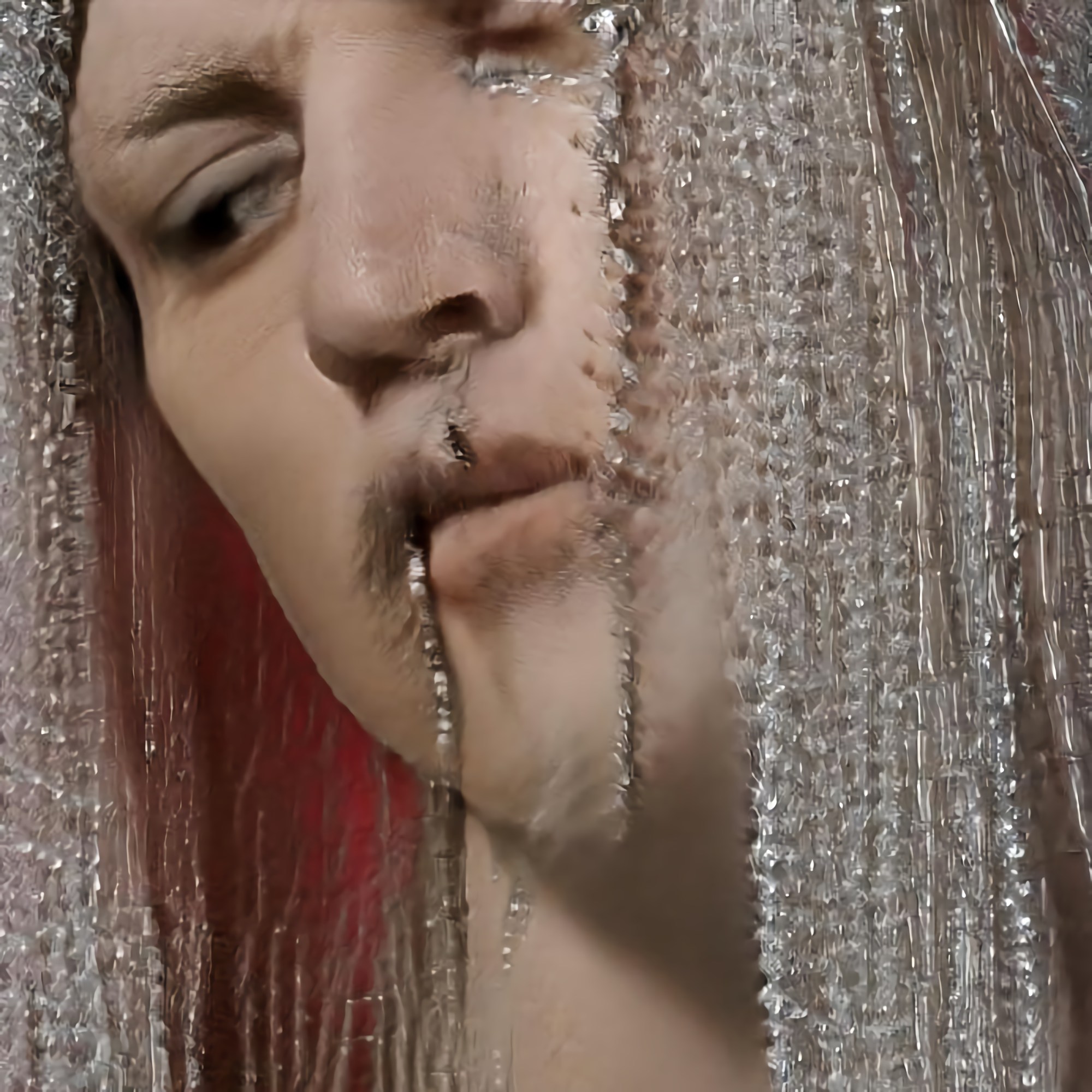
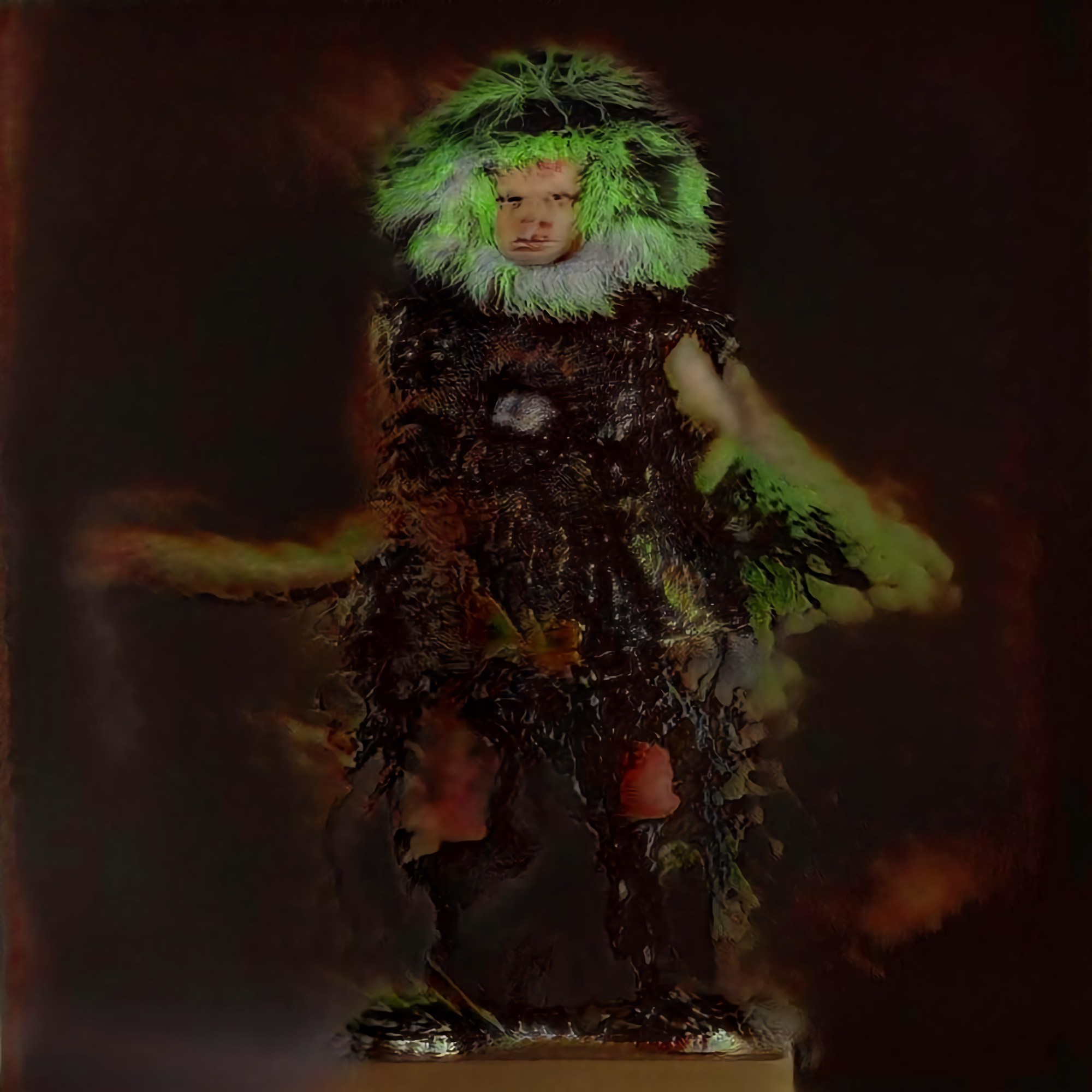

Kallan Hughes
How would you introduce your final project?
It’s an exploration into the world of artificial intelligence, creating abstract outcomes which push the boundary of what is considered a fashion image. There is so much potential when it comes to AI, I think it is really important to explore and experiment with nontraditional methods of image creation.
What were the central themes you wanted to explore?
I collaborated with AI artist Malthus to create the images and moving image. I wanted to create abstract imagery in a nontraditional way, for example 3D scanning archive fashion and creating imagery and video with GAN. The ARC London loaned me some amazing Alexander McQueen pieces and I think it will be great for people to see these archival pieces up close in an environment where they can move around the garment and see its details.
Which fashion imagemakers do you particularly admire?
To me, Nick Knight is one of the most innovative image makers of all time. He constantly pushes boundaries and embraces new media which I think is really exciting. I also find myself constantly inspired by Manfred Thierry Mugler’s photography from the 80s and 90s — from the sense of surrealism in his images, to the use of colour.
You’re graduating at a time when conversations around the politics of race, gender, sexuality and wider identity have never been more prominent in fashion discourse. How do you position your work with respect to these conversations?
I always try to have a diverse cast and as a queer person, clothing has no gender to me. With this project, the clothing could be described as feminine but we still chose to place this on a cis male model — not for effect, just because it suited the model. I think it’s really important to think with an open mind.
What does the future of fashion imagery look like to you?
For me, I would love to see more CGI and AI-based imagery. There is so much more to explore and AI has such huge potential. The outcomes of AI can be very abstract, which I find beautiful. I would also like to see more diversity with casting in fashion.
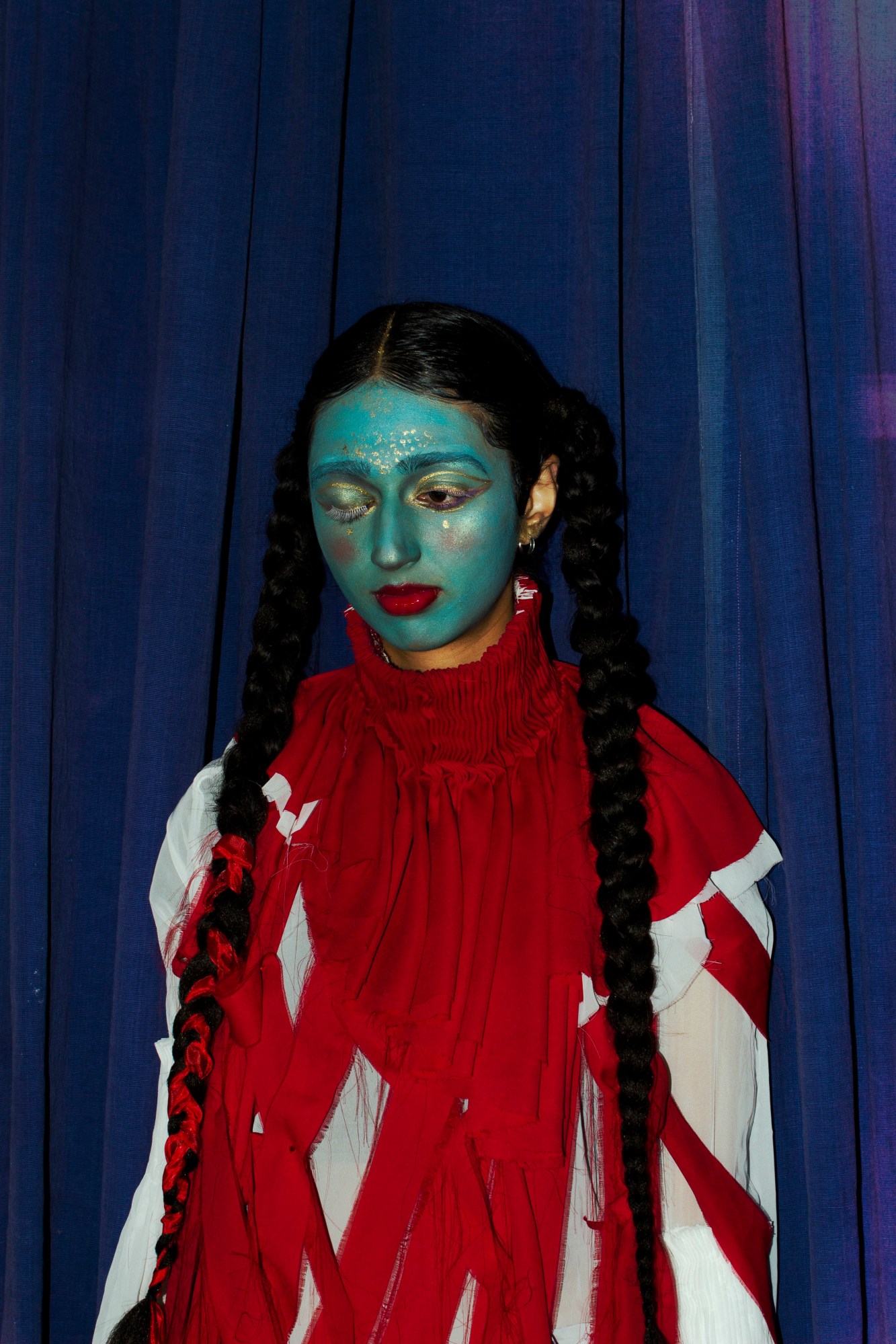

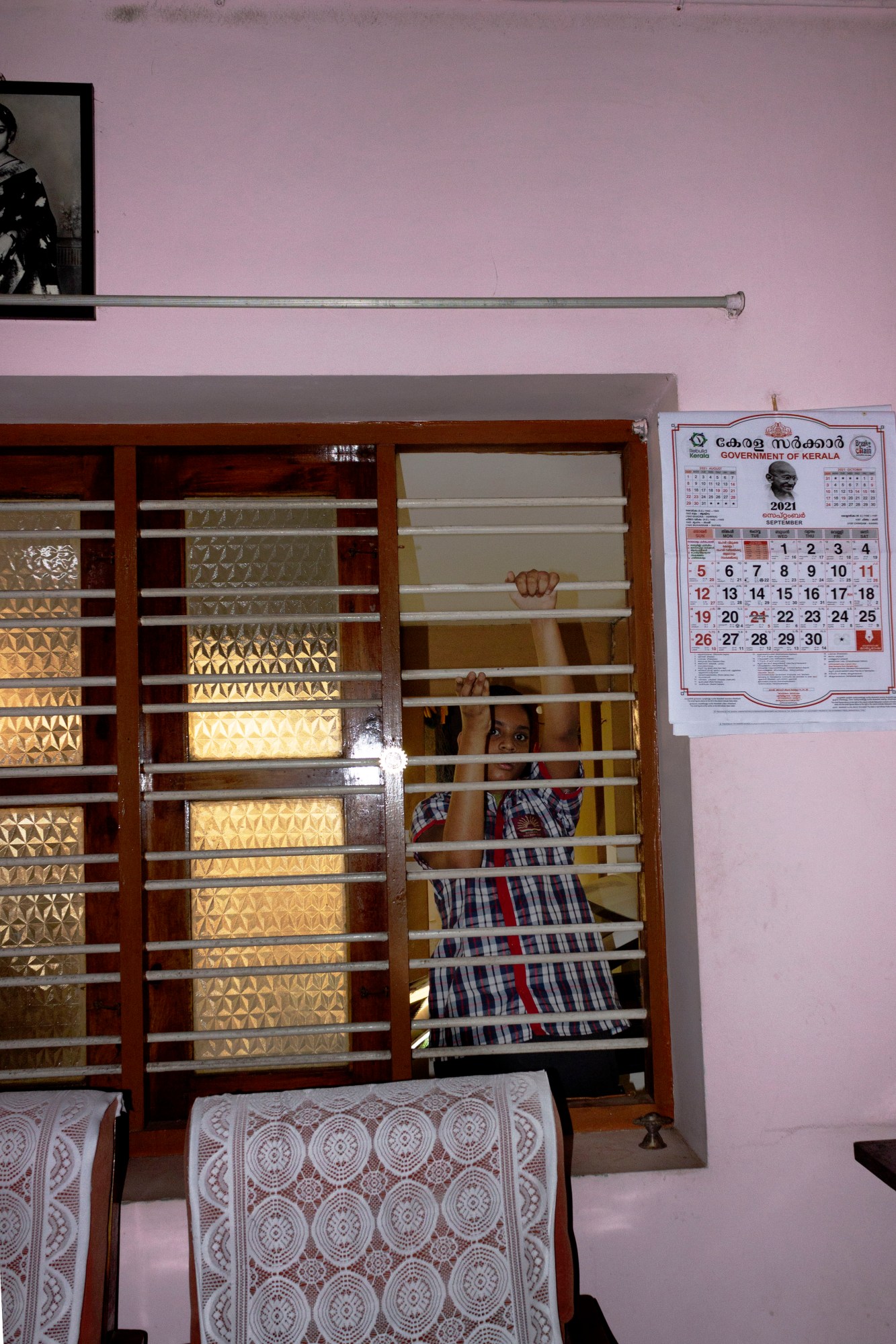

Aparna Aji
How would you introduce your final project?
I would say this project is an abstract, encyclopaedic letter to myself. Almost like a set of reminders I would hand over to another version of myself, tracing bits of narratives and characters I have grown up around. The images are presented as a coherent storyline with no definite beginning or end, where the contents of it are left to the viewers imagination. It is meant to feel like a humorous segment in a REM dream — like you’re lingering in the tension between the real and the surreal.
What were the central themes you wanted to explore?
I started this off as a reaction against an institutionalised practice of image-making, so I went in the direction of vernacular/found photography to dissect Asian and South Asian identities, performances and sartorial representation. By performances, I mostly mean the unintended theatricality that exists in people, the in-betweens that I think have not been looked at enough. The images are also an outcome of a game of broken telephone that I played with myself — a game that relies on human errors and inaccuracies.
What is fashion imagery’s purpose today?
I think fashion imagery today should be about making people feel comfortable about themselves and their stories. I believe fashion imagery is dangerously powerful in selling any idea it wants – especially when it comes to perceptions of race, gender, body and identity, so I see it as a weapon that needs to be in the right hands. It still has a long way to go but I’m happy to see fashion imagery breaking away from a global north/Eurocentric approach today, with so many talented image-makers taking a strong stand in representing their identities and narratives.
Which fashion image–makers do you particularly admire?
My work is a big concoction of visuals that borrow an element from each image-maker I like. Off the top of my head, I very much admire Deana Lawson, Ronan McKenzie and Feng Li for the unique visual languages they’ve used to represent the intimacy and aesthetics they believe in. I appreciate how their work combines social documentary and fantasy — a setup I love to work with frequently. I also enjoy Rottingdean Bazaar’s humour and Farhan Hussain’s compositions and locations. You can also find some raw undertones of Harley Weir in my work — she always has me wondering what went on behind the making of her images.
What does the future of fashion imagery look like to you?
A space where fantasy and authenticity aren’t two separate, distinct concepts, but rather exist in a symbiotic relationship, leaching into each other’s territory.
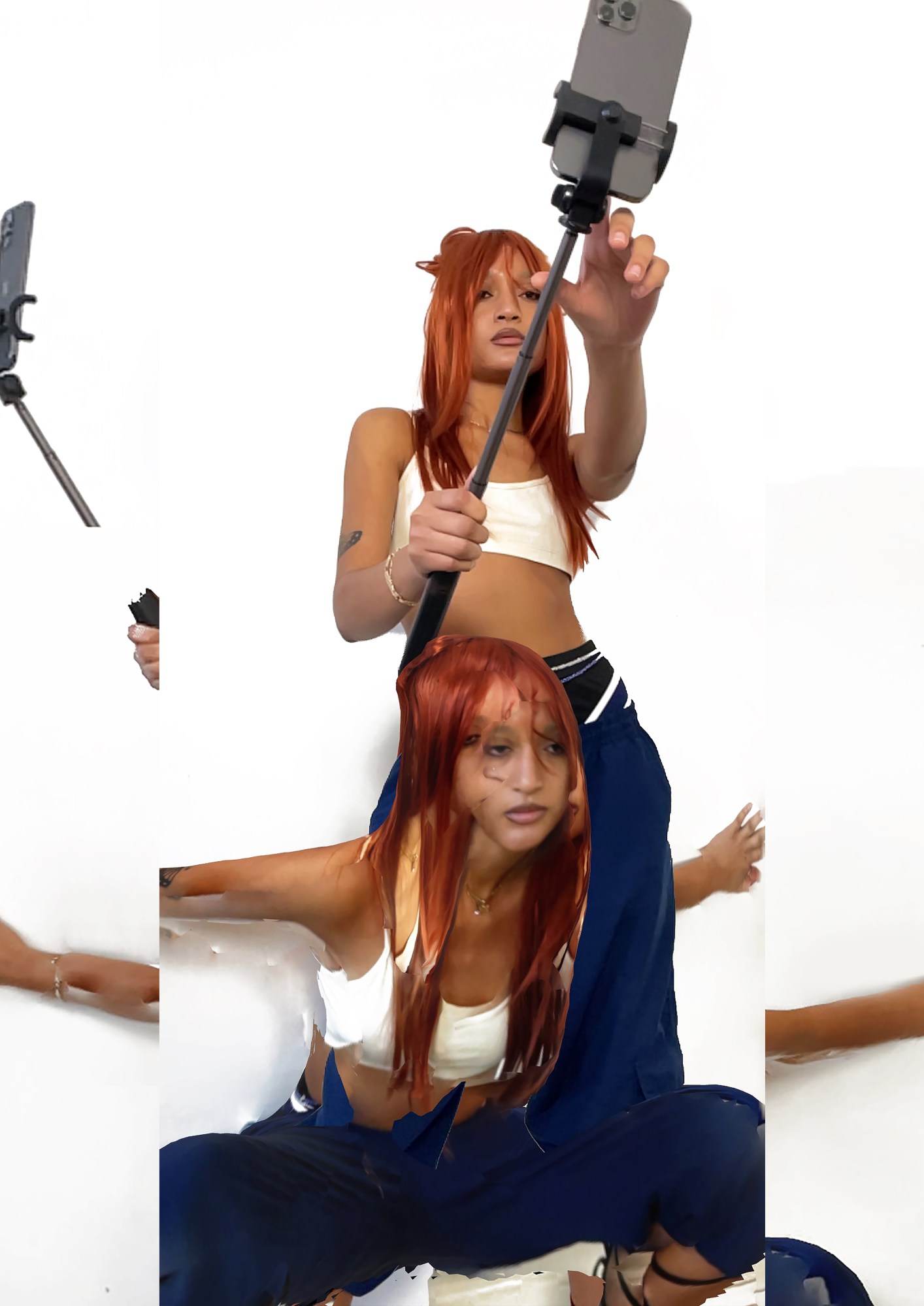
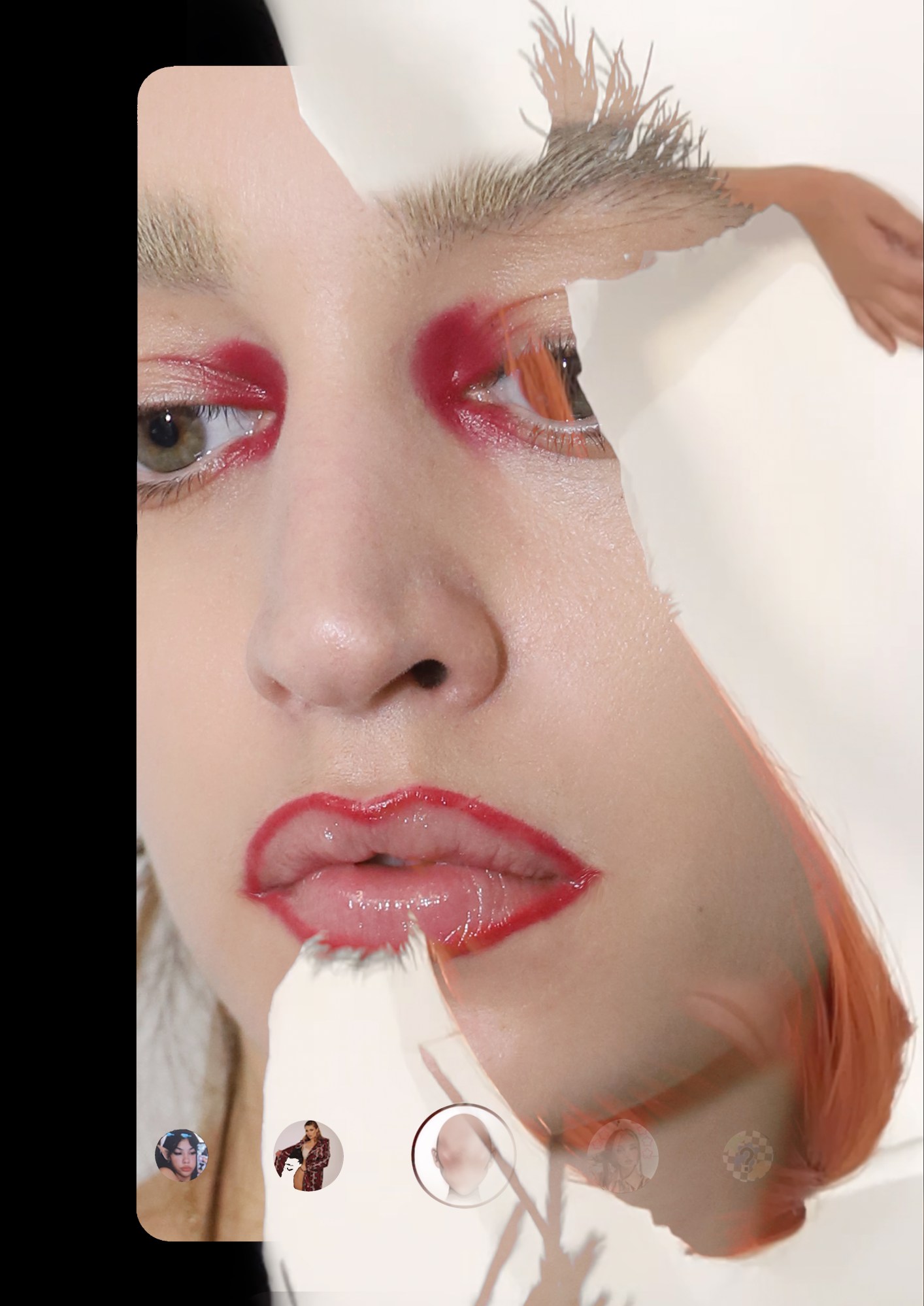


Eomji Sim
How would you introduce your final project?
‘Real-Time’ is inspired by people who rely on their own digital devices in the cities we live in. By sharing my experience of digital culture through fashion image, I wanted to talk about where we are now and how we exist. I have explored how we navigate physical and virtual identities in a world where abstract digital space and physical urban landscapes are blended in an immersive, participatory way – VR and AR, for example. I also wanted to investigate the subjectivity of truth and perception, showing the same scene at the same instant, captured from different angles.
For you, what makes for a powerful fashion image?
I believe that an innovative fashion image practice should present new modes of fashion communication, multi-platform experience and audience interaction.
What is fashion imagery’s purpose today?
Although each image has different purposes and intentions, images should create and develop value. Currently, by showing various fashion images through social media and different platforms — rather than just as flat advertisements — people’s attention can be caught in a short time and in unique ways. On social media, for example, images engage with identity in a different way, creating invisible value. Making something from nothing, or just by changing the context of the image, is a very interesting area.
Which fashion image-makers do you particularly admire?
There are so many people I admire, but it is Barbara Probst, a visual artist who has collaborated with many fashion brands, that I refer to most often in my work. She also explores the subjectivity of truth and perception by capturing the same scene at the same instance, from different angles; her work has helped me to break through visual prejudices I previously had. The idea is simple, but I think it shows how radically you can approach the task of creating an image.
What does the future of fashion imagery look like to you?
To create a genuine image, the aesthetic must relate to the creator’s identity. As the development of new technologies and media affects all industries and people’s lives, I believe that this will not only change the systems we exist in, but also people’s behavioural patterns and identities. Therefore, in the future, I think that the amazing skills we acquire will apply to different situations, creating innovative new image-makers that stand out
